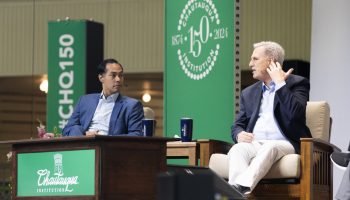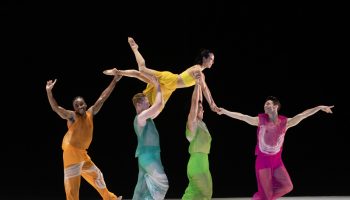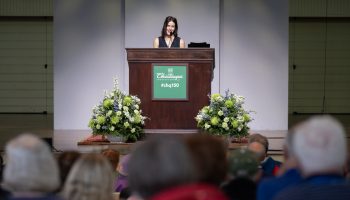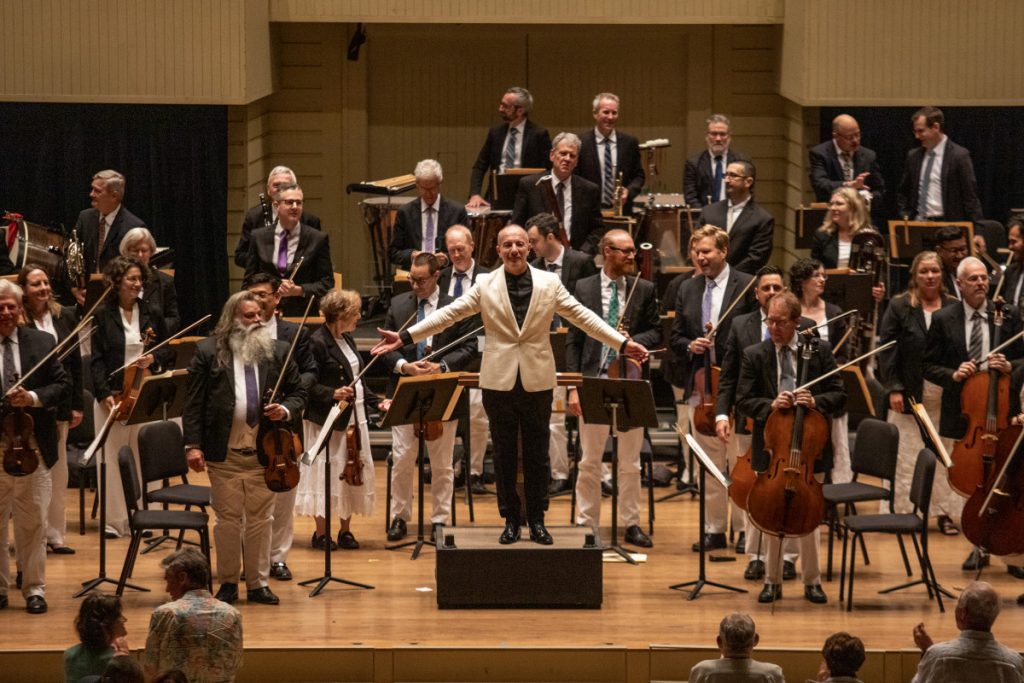
Sarah Russo
Staff writer
Principal Symphonic Conductor Rossen Milanov and the Chautauqua Symphony Orchestra are looking forward to saxophonist Steven Banks’ visit to the grounds for several reasons. Together, Milanov, the CSO and Banks will embark on a work so new, this evening’s concert will be one of its very first performances.
That work is composer Billy Childs’ Concerto for Saxophone and Orchestra, written for Banks and co-commissioned by Chautauqua Institution, and it’s on the program for the CSO’s concert at 8:15 p.m. tonight in the Amphitheater.
Since Childs’ concerto exploring aspects of the African American experience is so new, Milanov said, the orchestra has no recording to reference, only the score.
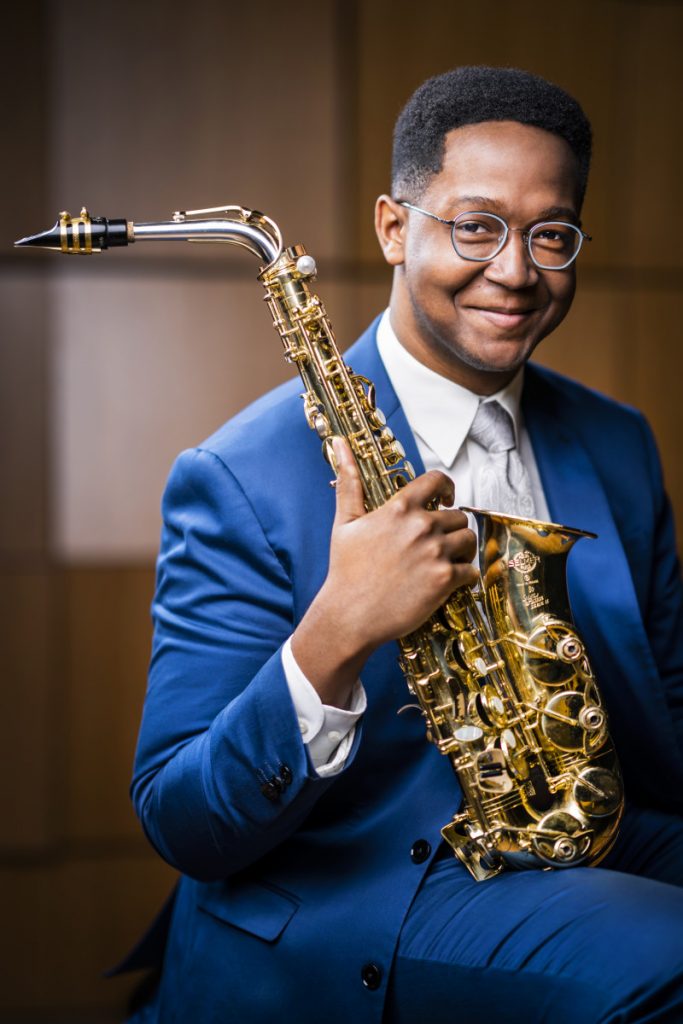
“I just have to wait for (Banks) to come here and see what he does with the piece,” Milanov said, adding that the CSO will have the opportunity to make changes and interpretations together at rehearsal. “It’s still a living piece.”
Concerto for Saxophone and Orchestra is the centerpiece of tonight’s program, which opens with Sergei Prokofiev’s Overture on Hebrew Themes and closes with Sergei Rachmaninoff’s Symphony No. 1, Op. 13.
Composed in 1919, Overture on Hebrew Themes premiered to positive reactions, making Prokofiev known as one of the few non-Jewish composers to capture the essence of Eastern-European Yiddish music.
The piece includes a playful dance tune, introduced and expanded by the clarinet, before featuring a second melody, a melancholy lament by the cello.
Next, the program fast-forwards to this century, showcasing the Concerto for Saxophone and Orchestra.
With an “ambitious blend of feelings and sounds,” Banks’ playing portrays a “deep intimacy” and “sense of vulnerability,” according to The Cleveland Classical.
This performance will bring Milanov and Banks together for the first time, even though the pair have two other future collaborations already planned for the fall.
Milanov is “really looking forward to making music with (Banks)” and “establishing a collaboration,” he said.
“It’s kind of a unique species on its own to have the collaboration of a jazz composer and a saxophone that is sort of used in a less traditional way in the orchestra,” Milanov said.
A musical poem, the piece explores the paradigm of the forced Black American diaspora through the experience of a Black man in America.
When Banks approached Childs, a five-time Grammy-winning jazz pianist, about creating this piece, the first thing they discussed was the narrative for the work, according to Childs in his program notes for the piece’s world premiere in February with the Kansas City Symphony.
Inspired by the work of poet Aloysius Bertrand in Ravel’s “Gaspard de la Nuit,” the concerto also follows three separate movements: Motherland, If We Must Die then And I Still Rise.
Motherland, based on “Africa’s Lament” by Nayyirah Waheed, creates a sense of well-being and security, felt by Africans living on the continent, before the saxophone takes an urgent tone as a battle begins.
The second section, If We Must Die, is based around the poem of the same name by Claude McKay, and imagines the journey of people now forced to become slaves. For example, a back-and-forth between the alto saxophone and orchestra aims to convey confusion, rage and terror as families are broken apart. At the same time, themes of self-love, self-worth and self-determination are still present.
To close the Concerto for Saxophone and Orchestra, the Maya Angelou-influenced And I Still Rise, represents Black empowerment. A focal point for black political and cultural activism, the church is a “sanctuary providing psychological and emotional relief from the particular hardships of Black life in America,” Childs wrote. So, the final section begins with a hymn-like phrase similar to one heard in the first section’s melody.
As the third section continues, a march featuring “victorious fanfare” concludes the concerto and signifies, as Childs wrote, that “Black people cannot and will not be held to a position of second class citizenship – we will still rise.”
To close the program, the CSO will perform Rachmaninoff’s Symphony No. 1, which premiered in 1897 but was not heard again for 48 years. Milanov said this is a lesser-known symphony by a familiar composer meant to complement the “symmetry” of the other two.
“The third piece is just like an archaeological discovery,” he said. “(This) particular work is sort of like a little hidden treasure.”


